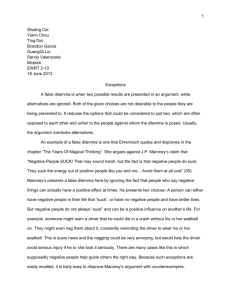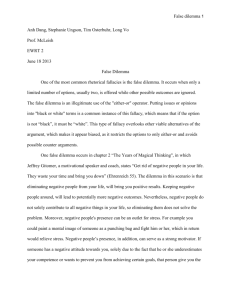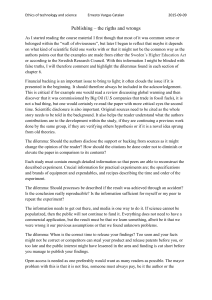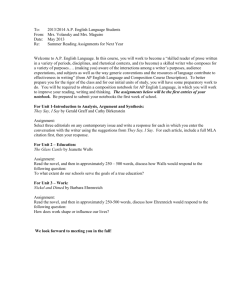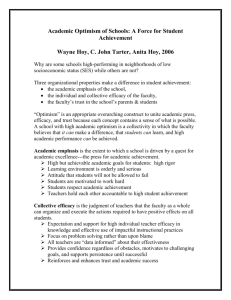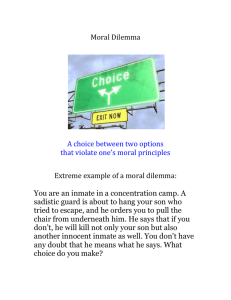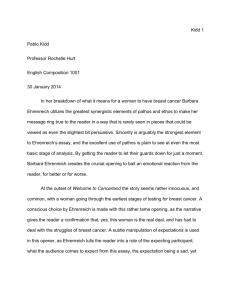False Dilemma B Sec 10
advertisement
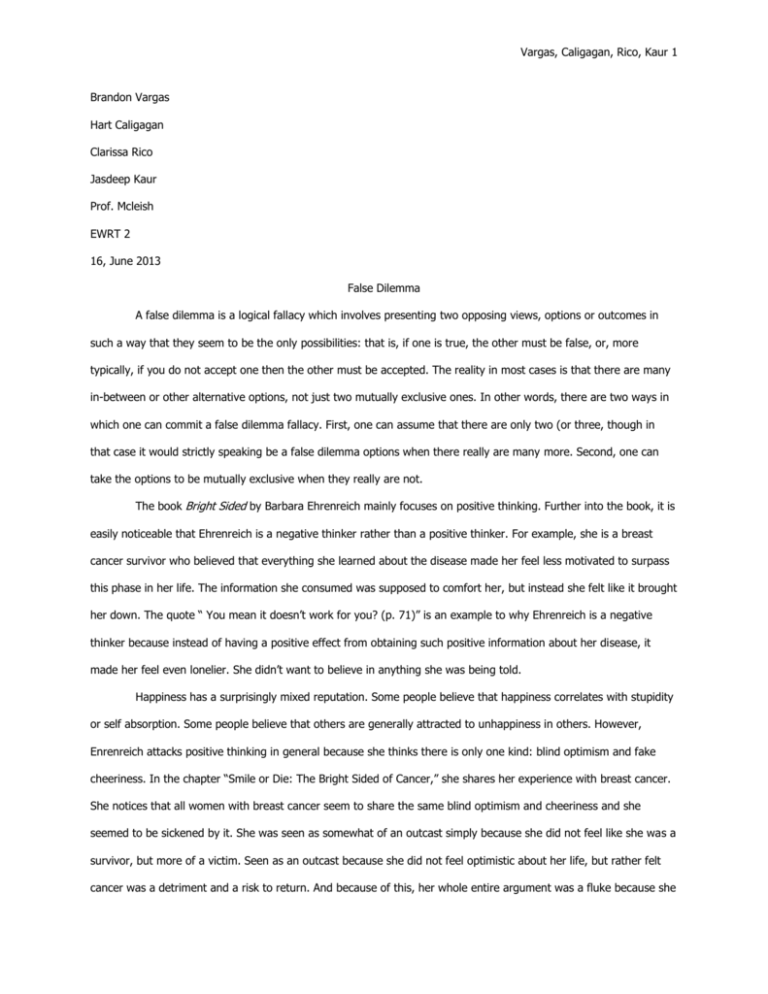
Vargas, Caligagan, Rico, Kaur 1 Brandon Vargas Hart Caligagan Clarissa Rico Jasdeep Kaur Prof. Mcleish EWRT 2 16, June 2013 False Dilemma A false dilemma is a logical fallacy which involves presenting two opposing views, options or outcomes in such a way that they seem to be the only possibilities: that is, if one is true, the other must be false, or, more typically, if you do not accept one then the other must be accepted. The reality in most cases is that there are many in-between or other alternative options, not just two mutually exclusive ones. In other words, there are two ways in which one can commit a false dilemma fallacy. First, one can assume that there are only two (or three, though in that case it would strictly speaking be a false dilemma options when there really are many more. Second, one can take the options to be mutually exclusive when they really are not. The book Bright Sided by Barbara Ehrenreich mainly focuses on positive thinking. Further into the book, it is easily noticeable that Ehrenreich is a negative thinker rather than a positive thinker. For example, she is a breast cancer survivor who believed that everything she learned about the disease made her feel less motivated to surpass this phase in her life. The information she consumed was supposed to comfort her, but instead she felt like it brought her down. The quote “ You mean it doesn’t work for you? (p. 71)” is an example to why Ehrenreich is a negative thinker because instead of having a positive effect from obtaining such positive information about her disease, it made her feel even lonelier. She didn’t want to believe in anything she was being told. Happiness has a surprisingly mixed reputation. Some people believe that happiness correlates with stupidity or self absorption. Some people believe that others are generally attracted to unhappiness in others. However, Enrenreich attacks positive thinking in general because she thinks there is only one kind: blind optimism and fake cheeriness. In the chapter “Smile or Die: The Bright Sided of Cancer,” she shares her experience with breast cancer. She notices that all women with breast cancer seem to share the same blind optimism and cheeriness and she seemed to be sickened by it. She was seen as somewhat of an outcast simply because she did not feel like she was a survivor, but more of a victim. Seen as an outcast because she did not feel optimistic about her life, but rather felt cancer was a detriment and a risk to return. And because of this, her whole entire argument was a fluke because she Vargas, Caligagan, Rico, Kaur 2 only introduced two options that are similar though in reality there are more options. On the point of blind optimism, I think positive psychologist would agree Seligman advises that if you are analyzing risky situations, like whether to de-ice the wings of a plane before take-off, that in fact pessimism may be the way to go. It is all about understanding when to use optimism and when not to use it. It is clear Enrenreich does not understand it. Word Count: 501
